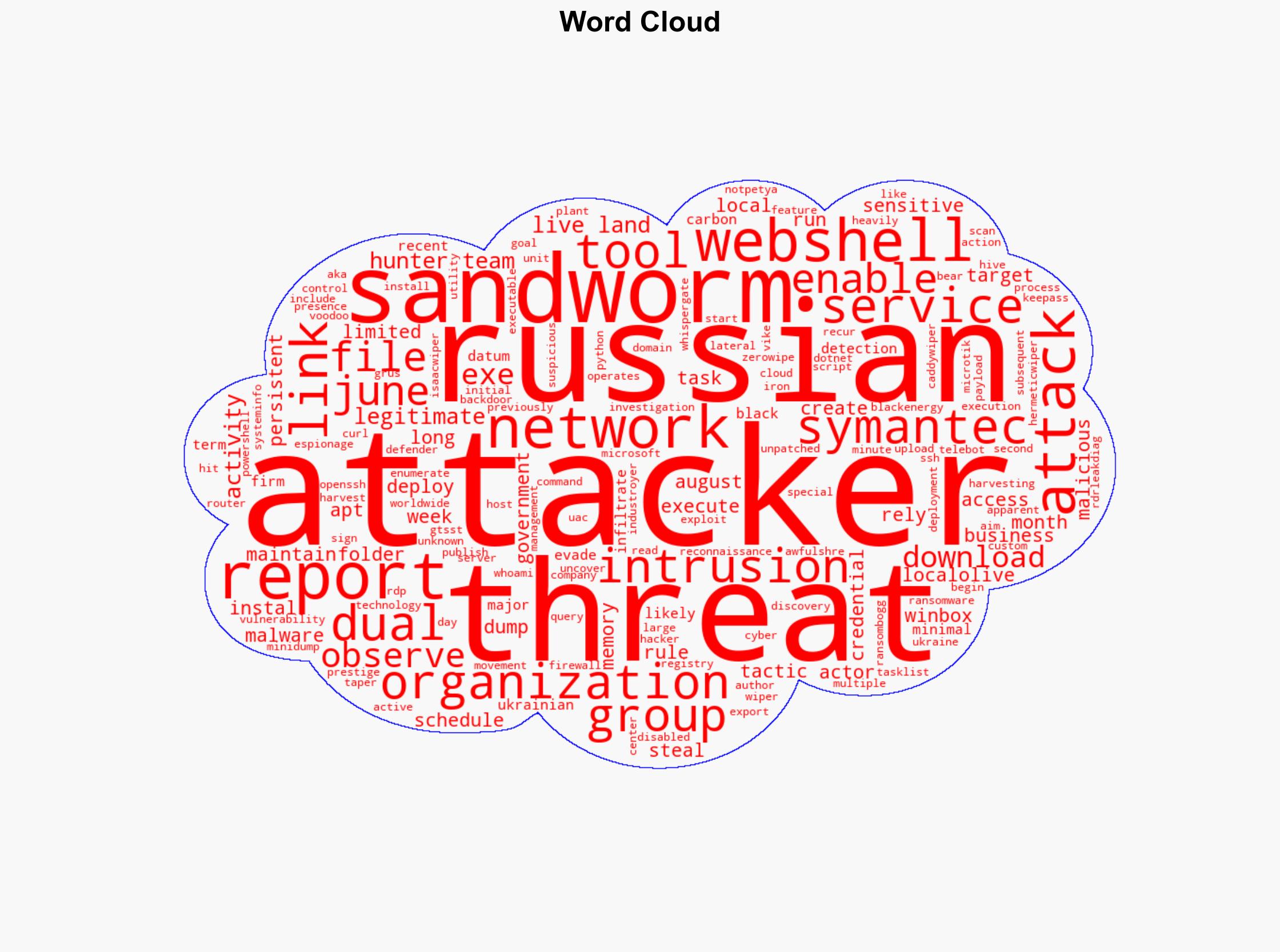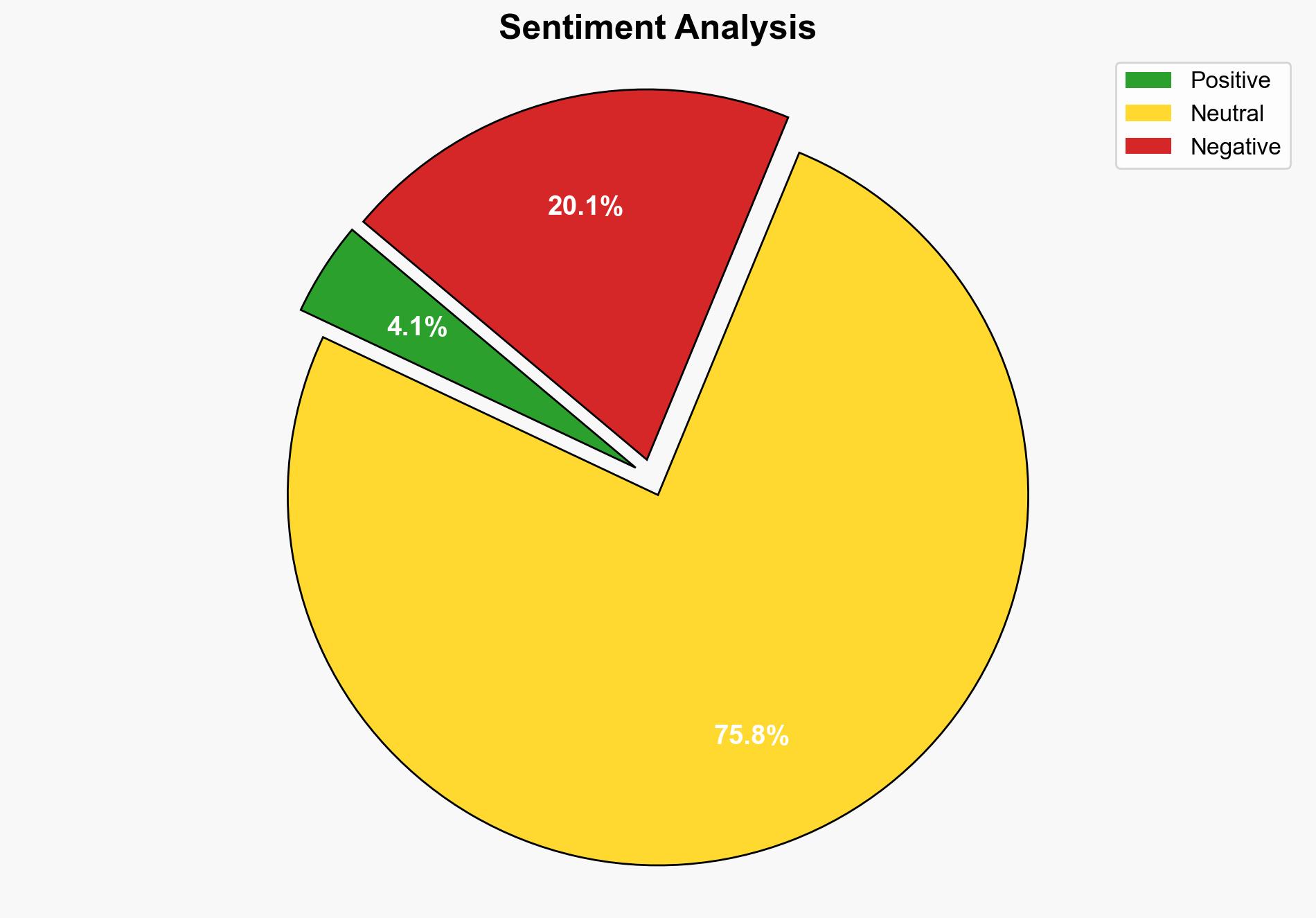Russian hackers likely linked to Sandworm exploit legitimate tools against Ukrainian targets – Securityaffairs.com
Published on: 2025-10-29
Intelligence Report: Russian hackers likely linked to Sandworm exploit legitimate tools against Ukrainian targets – Securityaffairs.com
1. BLUF (Bottom Line Up Front)
The most supported hypothesis is that Russian threat actors, likely linked to the Sandworm group, are using legitimate tools to maintain a persistent presence in Ukrainian networks. This assessment is made with moderate confidence due to the reliance on indirect evidence and the complexity of attribution in cyber operations. Recommended action includes enhancing cybersecurity measures and international collaboration to counteract these threats.
2. Competing Hypotheses
1. **Hypothesis A**: Russian hackers, specifically the Sandworm group, are exploiting legitimate tools and unpatched vulnerabilities to conduct cyber espionage and maintain long-term access to Ukrainian networks.
2. **Hypothesis B**: Another actor, potentially a non-state group or a different nation-state, is mimicking Sandworm’s tactics and techniques to obscure their identity and intentions, thereby misleading attribution efforts.
Using the Analysis of Competing Hypotheses (ACH) 2.0, Hypothesis A is better supported due to the historical context of Sandworm’s operations, the specific tactics used, and the geopolitical context. However, the possibility of deception or false flag operations cannot be entirely ruled out.
3. Key Assumptions and Red Flags
– **Assumptions**: The analysis assumes that the tactics and tools observed are unique to Sandworm and that the geopolitical context aligns with Russian interests.
– **Red Flags**: The lack of direct evidence linking the attacks to Sandworm, reliance on open-source intelligence, and potential cognitive biases in attributing activities to well-known groups.
– **Blind Spots**: Limited visibility into the full scope of the network intrusions and potential undiscovered vulnerabilities or tools used by the attackers.
4. Implications and Strategic Risks
The use of legitimate tools and minimal malware increases the difficulty of detection and mitigation, posing a significant risk to Ukrainian national security and critical infrastructure. The potential for escalation includes retaliatory cyber operations, increased geopolitical tensions, and economic impacts due to disrupted services. The psychological impact on public trust in cybersecurity measures is also a concern.
5. Recommendations and Outlook
- Enhance monitoring and detection capabilities for legitimate tool abuse and unpatched vulnerabilities.
- Strengthen international collaboration for intelligence sharing and coordinated responses.
- Conduct regular cybersecurity audits and training for Ukrainian organizations.
- Scenario Projections:
- Best Case: Successful mitigation and attribution lead to diplomatic resolutions.
- Worst Case: Escalation of cyber operations resulting in significant infrastructure damage.
- Most Likely: Continued low-level cyber operations with incremental improvements in defense and detection.
6. Key Individuals and Entities
– Sandworm (also known as BlackEnergy, UAC-0056, Iron Viking, Voodoo Bear, TeleBots)
– Symantec Threat Hunter Team
– Carbon Black Report
7. Thematic Tags
national security threats, cybersecurity, counter-terrorism, regional focus




